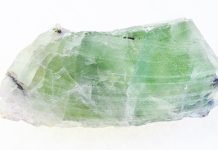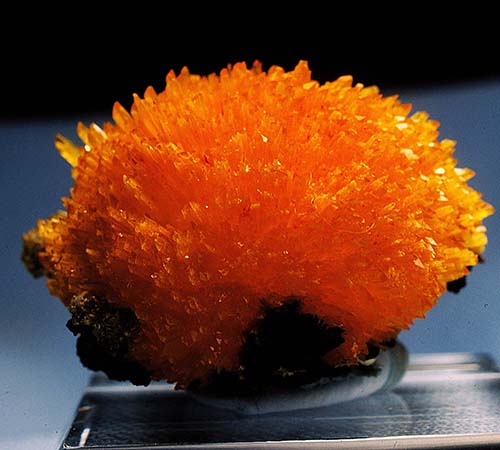
Adamite and legrandite from Mexico can now be added to most lists of classic minerals joining the ranks of silver from Kongsberg, Norway; proustite from Chañarcillo, Chile; several sulfosalts from Germany; bournonite from Cornwall, England; azurite from Chessy, France; pink fluorite from the Alps; franklinite from New Jersey and stibnite from Japan.
Mapimi Minerals
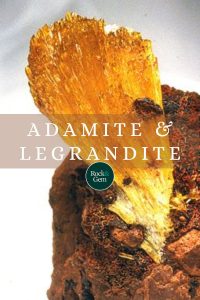
Fortunately, there have been occasions in the last few decades when a source was found whose specimens far exceed any known examples of the species, and those deserved the designation of “classic.” Mapimi, Mexico, yielded two species that deserve being called classics: adamite and legrandite crystals ranging from one to three inches, which diverged on a reddish-brown limonite matrix.
One such specimen that I was particularly familiar with was brought to Arizona by Benny Fenn in the 1970s. The legrandite was impressive, though the crystal spray was on a big—really big—chunk of reddish-brown limonite. The limonite matrix was a distraction. It was infused with silica, so it was difficult to break and trim. The owner finally decided to remove the legrandite carefully, trim the matrix to a good size, and replace the yellow spray by gluing it back in its original spot.
As exciting as the sporadic appearance of quantities of fine yellow legrandite specimens through the 1960s and ’70s was, the 1979 find confirmed legrandite as a classic.
Legrandite Sets Mina Ojuela’s Reputation
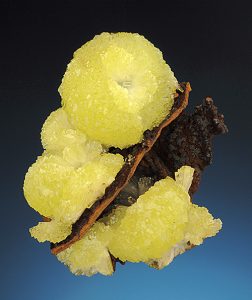
A pocket opened in 1979 yielded a specimen I named the Aztec Sun. This amazing specimen is clearly the most famous legrandite of all, and it solidified Mina Ojuela’s reputation as something special.
Jack Amsbury, the mineral dealer who brought the specimen out of Mapimi, called me when he got back to the United States and invited me to Tucson to see this amazing specimen. The specimen was bought from Jack by our friend Miguel Romero. After Miguel’s death, his collection—including the Aztec Sun—was scheduled to go into the University of Arizona mineral collection. Because of some unfortunate circumstances, however, the collection was sold, ending up in a museum in the Near East.
Admiring the Aztec Sun
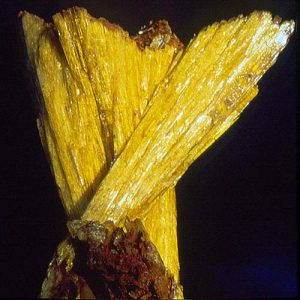
The Aztec Sun, the best legrandite ever found, is about five inches across and is composed of two complex crystal clusters that form opposing fanlike sprays. This beauty was joined four weeks later by another huge legrandite from the same pocket area. It is a single, narrow, diverging crystal cluster measuring nearly a foot long. At last report, it was in the New York Museum of Natural History.
The remarkable specimens of adamite and legrandite, both found in quantity at Mapimi, leave no doubt that this old silver mine will go down in collector history as a source of classic specimens.
This story about adamite and legrandite previously appeared in Rock & Gem magazine. Click here to subscribe. Story by Bob Jones.




